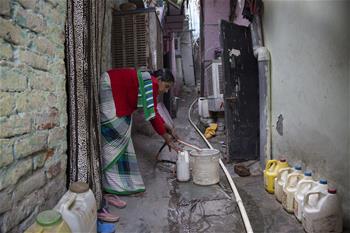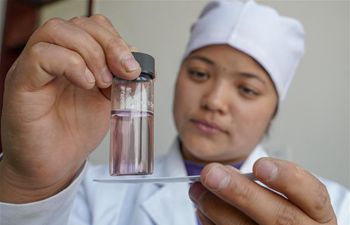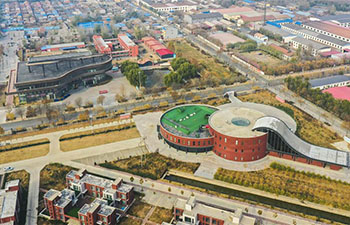WASHINGTON, Nov. 23 (Xinhua) -- Researchers from Massachusetts Institute of Technology (MIT) have created a clear, conductive coating that could increase solar cell's efficiency and stability.
The study published on Friday in the journal Science Advances described the transparent material with high electrical conductivity. Transparency and conductivity are two requirements for solar cell's protective materials.
Usually, indium titanium oxide (ITO) is used to protect the solar cell, but it is quite brittle and can crack after a period of use.
The MIT researchers developed a flexible version of a transparent, conductive material two years ago, but it failed to match ITO's combination of high optical transparency and electrical conductivity.
The combined transparency and conductivity is measured in units of Siemens per centimeter with ITO ranging from 6,000 to 10,000, according to the study.
By comparison, the previously reported alternative materials demonstrated a value of only 50. The new material developed by MIT researchers now clocked in at 3,000, and the team is still working on fine-tuning the process to raise that further.
The high-performing flexible material is an organic polymer known as PEDOT. It is deposited in an ultrathin layer just a few nanometers thick, according to the study.
They incorporated a layer of the highly aligned PEDOT into a perovskite-based solar cell. Those cells are considered a very promising alternative to silicon because of their high efficiency and ease of manufacture, but their lack of durability has been a major drawback.
With the protection of PEDOT, the perovskite's efficiency improved and its stability doubled, according to the study.
The PEDOT layer was applied to substrates that were six inches (about 15 centimeters) in diameter during tests, but the process could be applied directly to a large-scale, roll-to-roll industrial scale manufacturing process.
The coating can be processed at 140 degrees Celsius, which is a much lower temperature than alternative materials require, according to the researchers.

















